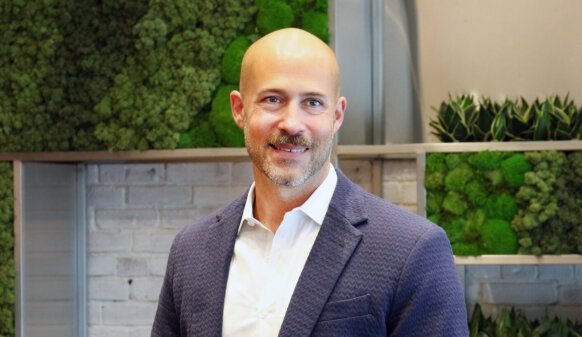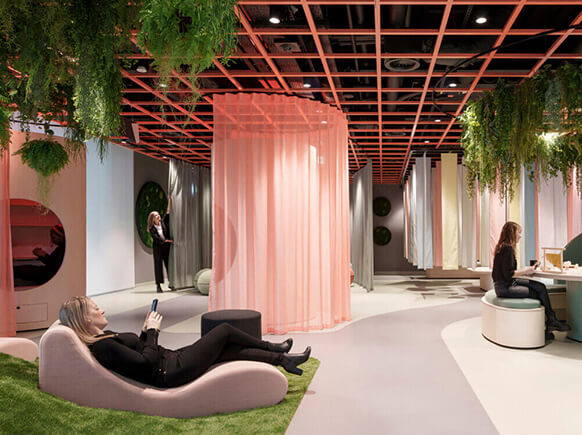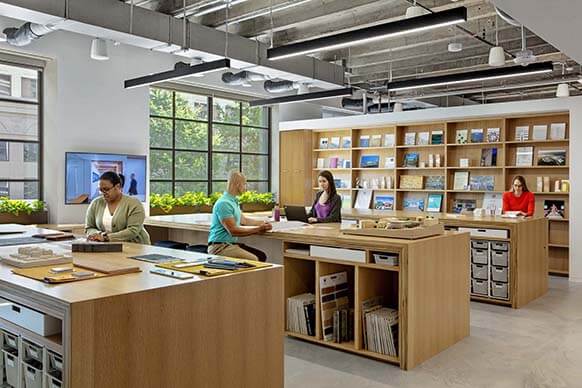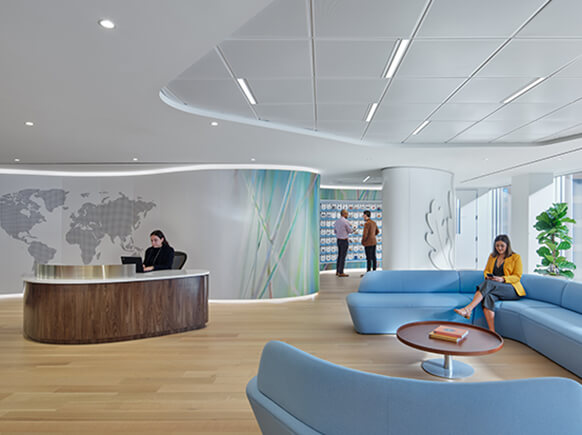
Greenpeace Headquarters
Greenpeace’s new office embodies the organization’s mission to reverse the detrimental impacts of climate change on our planet and society through advocacy and leadership. The workplace was conceived as a prototype for climate responsible interior fit-outs, demonstrating approaches to reducing embodied carbon within a modest budget. The design supports Greenpeace’s values of environmental stewardship through the concept of circularity: all things are part of a larger cycle, and it is our responsibility to adapt and improve on the past and present to create a better future.
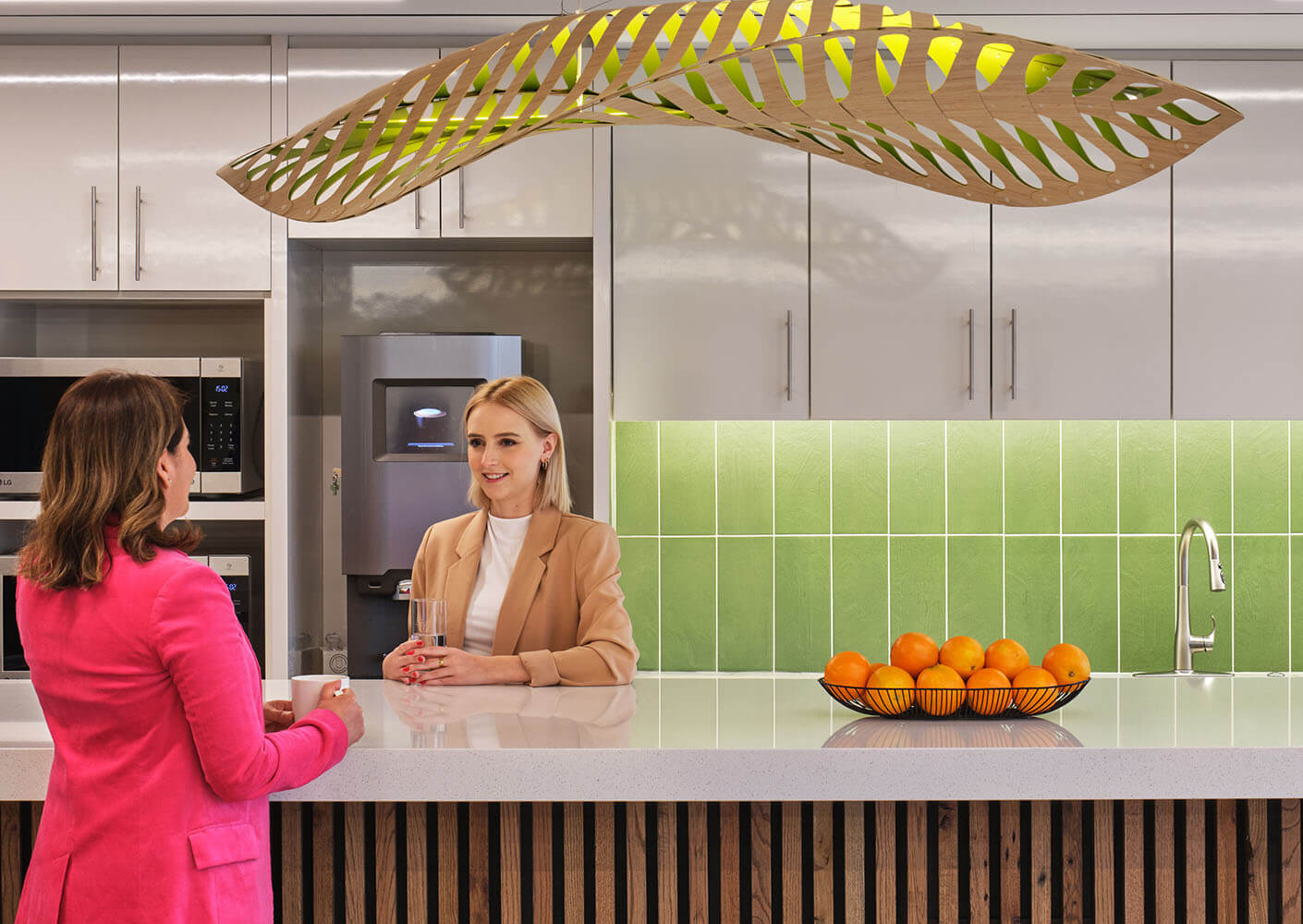
Closing the loop.
Conventional design and construction practices often fail to address the full life cycle of building products. Greenpeace’s new headquarters achieved an impressive 54% reduction in embodied carbon by re-using repurposed elements and selecting sustainable materials, as well as designing for end of life disassembly and future re-use.
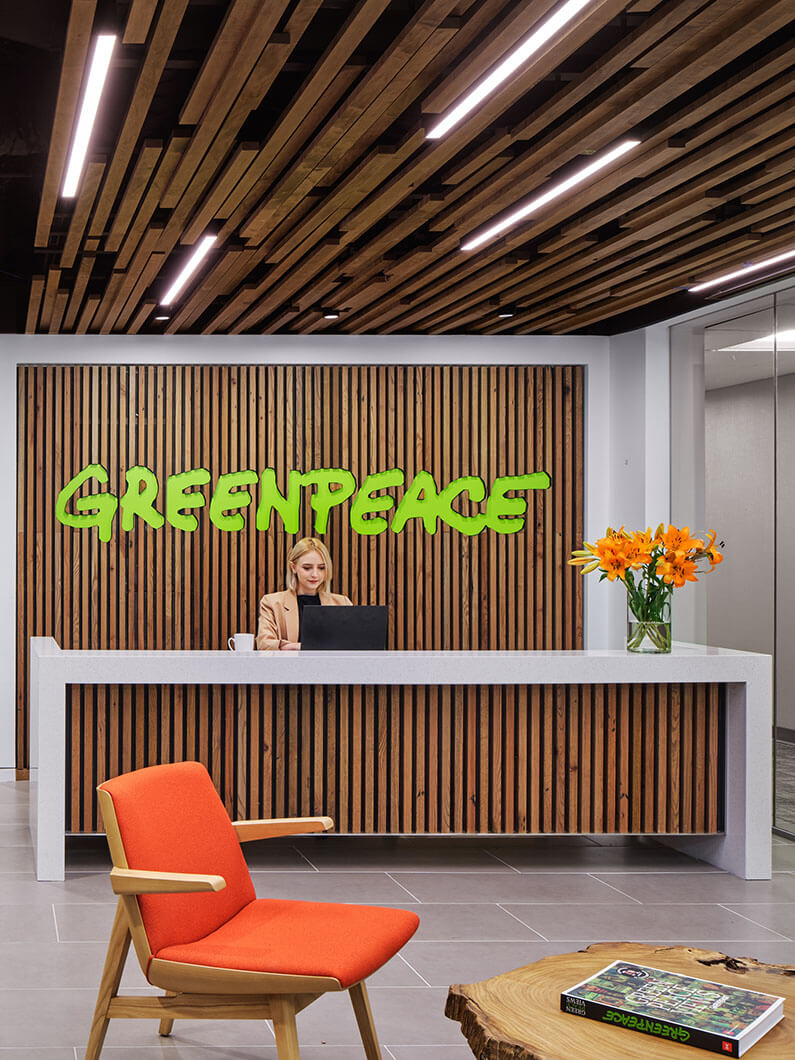
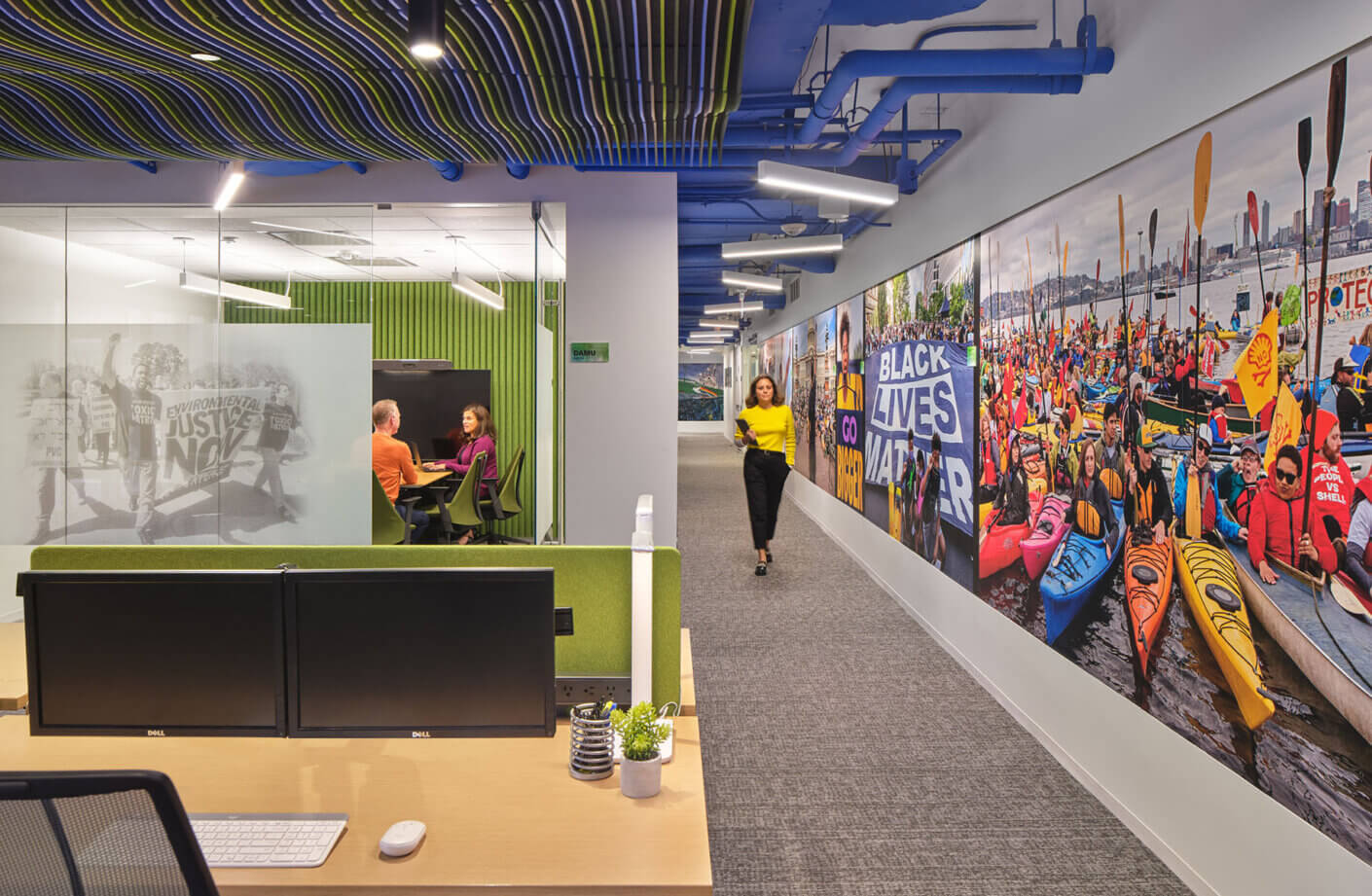
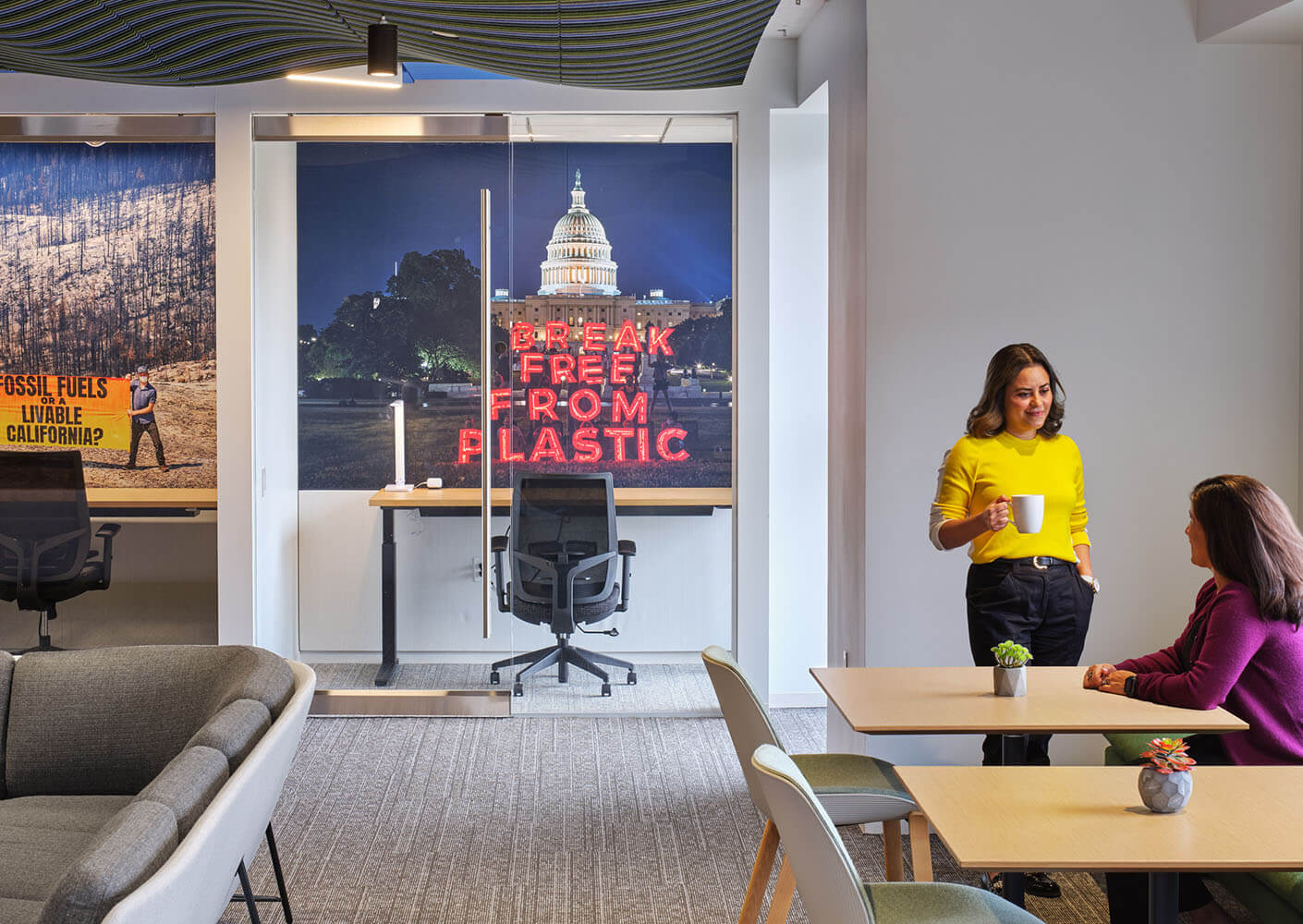

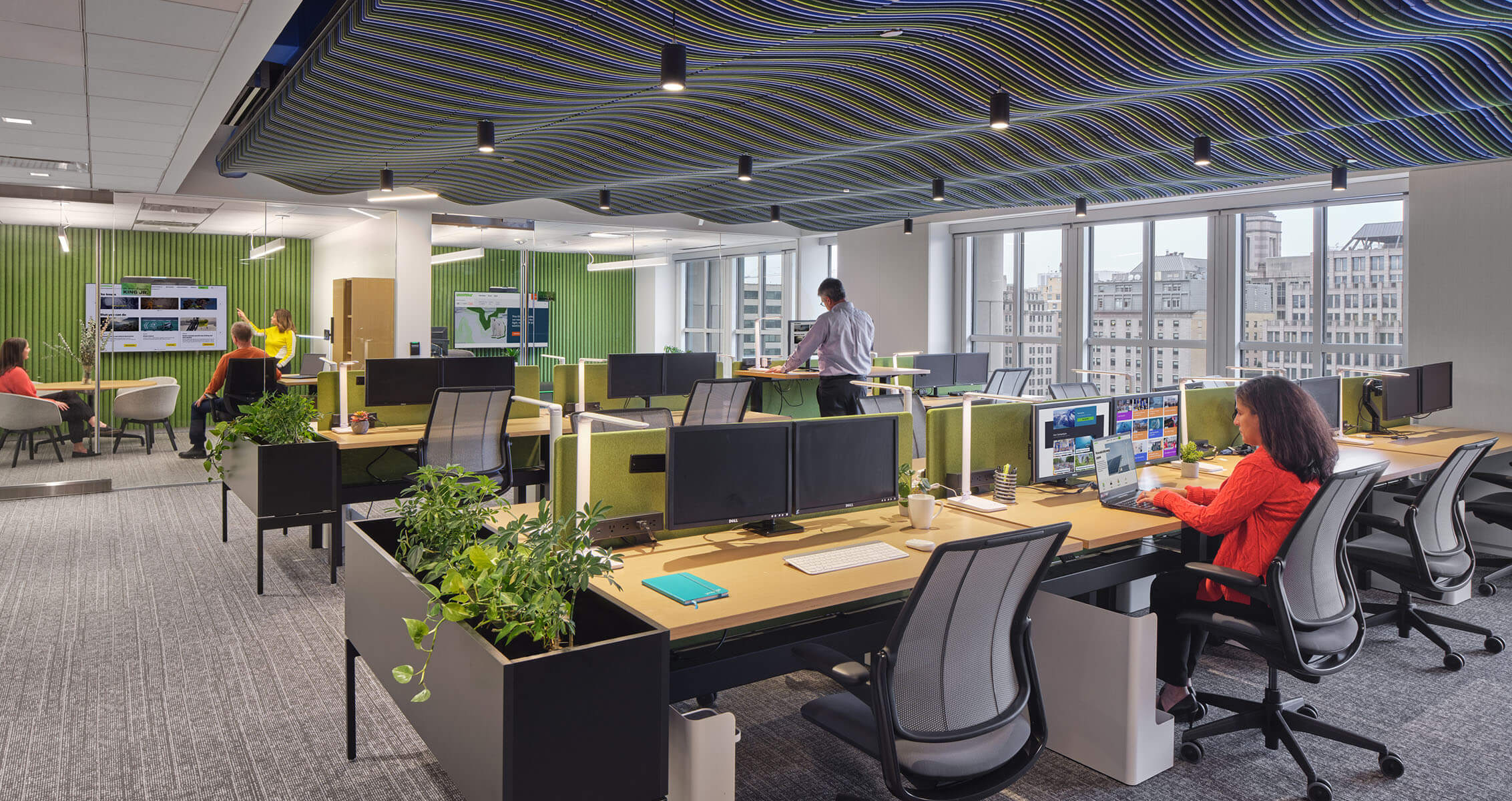
The form of the baffle ceiling in the open office was designed to evoke the ripple of waves as people move through the space. Wood is a carbon sequestering material that provides biophilic benefits, and plant life is abundant throughout. 63% of regularly occupied spaces have direct view of Franklin Park and 76% of workspaces have access to daylight.
Three mission-driven organizations, including Greenpeace, demonstrate how effective design strategies can help a project realize significant reductions in global warming potential and improvements to occupant health without adding to construction costs.

